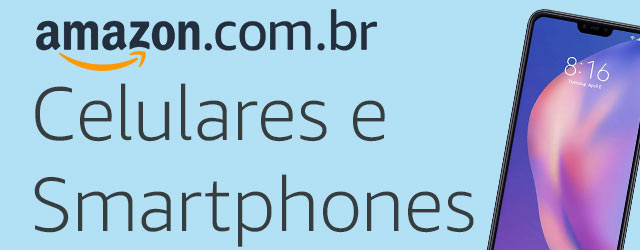Color is more than just decoration—it’s emotion, memory, and meaning rolled into one. When you’re designing a flyer, the colors you choose can make or break how your audience perceives your brand. Whether you’re promoting a product launch, a seasonal sale, or a community event, your flyer’s color scheme is often the first thing people notice—and it plays a key role in driving their reaction. The good news? You don’t need expensive tools to get it right. With a free flyer maker printable, you can easily experiment with colors and layouts until you find the perfect combination that reflects your brand identity.
Let’s explore why brand colors matter so much in flyer design—and how you can strategically use them to boost recognition, trust, and engagement.
1. Color and Brand Recognition Go Hand in Hand
Research shows that color increases brand recognition by up to 80%. Think about the world’s most recognizable brands—Coca-Cola’s red, Starbucks’ green, McDonald’s yellow. You can probably visualize their logos and packaging instantly, all thanks to consistent color use.
When designing a flyer, using your brand’s primary and secondary colors helps build that same visual connection. If your audience sees your brand colors repeatedly across different marketing materials—flyers, social media posts, website banners—they begin to associate those colors with your business. This consistency fosters familiarity and trust, making your flyers more memorable even at a quick glance.
Tip: Stick to your core color palette. Don’t introduce too many new hues unless you’re running a special event or seasonal promotion where a slight variation (like adding gold for the holidays) enhances the message.
2. The Psychology Behind Color Choices
Colors influence emotions—and emotions drive decisions. Understanding basic color psychology can help you choose hues that resonate with your target audience:
- Red: Excitement, energy, passion. Great for flash sales or limited-time offers.
- Blue: Trust, stability, calmness. Perfect for professional services or healthcare flyers.
- Yellow: Optimism, warmth, creativity. Excellent for kids’ activities or summer events.
- Green: Growth, health, nature. Ideal for eco-friendly or wellness-focused businesses.
- Black: Luxury, sophistication, power. Great for high-end or fashion brands.
The key is balance. For example, using too much red can overwhelm the viewer, while excessive blue may seem cold or distant. Aim for a blend that highlights your message without overshadowing your brand identity.
Pro insight: Use contrasting colors strategically—such as a bright call-to-action (CTA) button on a neutral background—to direct attention where you want it most.
3. Consistency Across Print and Digital Media
Flyer design doesn’t exist in isolation. Your printed materials should visually align with your digital presence—your website, social media profiles, and email campaigns. If your Instagram feed uses pastel tones but your flyers are saturated and bold, the inconsistency can confuse potential customers.
To maintain harmony:
- Use the same HEX and CMYK codes for your brand colors across all media.
- Test your color combinations both on screen and in print (since colors can look different depending on the medium).
- Include your brand’s logo and tagline in consistent placements on every flyer.
This visual consistency strengthens your overall branding, making it easier for customers to recognize and trust your business wherever they see it.
4. Using Accent Colors to Guide the Viewer’s Eye
While your primary brand colors should dominate the flyer, accent colors play a crucial supporting role. They guide the viewer’s attention and help emphasize key elements—such as your CTA, discount offer, or event date.
For example:
- Use a contrasting accent color for your “Buy Now” or “Sign Up” button to make it stand out.
- Highlight key phrases or numbers (like “50% OFF”) in your accent color to grab attention immediately.
- Keep background colors neutral if your main goal is to highlight product photos or text details.
Too many clashing colors, however, can overwhelm your audience. Stick to a simple rule: one dominant color, one secondary color, and one accent color for emphasis.
5. Testing and Adapting Your Color Strategy
Even with a strong brand palette, it’s smart to test and refine your color choices based on audience response. For instance, if you notice your red sale flyers get more engagement than blue ones, that’s valuable data.
You can use A/B testing on digital flyers or analyze customer feedback to see which color combinations perform best. Then apply those insights to your printed flyers for more impactful results.
Platforms that offer design templates often make this process easier. You can swap color schemes in seconds and print multiple versions to see which resonates more with your audience.
6. Bringing It All Together: Design with Purpose
At its core, color is communication. The role of brand colors in flyer design isn’t just about looking good—it’s about sending the right message, triggering the right emotions, and creating a unified visual story that strengthens your brand’s presence.
So the next time you design a flyer, think strategically. Use your brand colors as the foundation, balance them with purpose, and stay consistent across every medium. The right palette doesn’t just attract attention—it builds recognition and trust that last far beyond the first glance.
If you’re ready to create visually cohesive, on-brand flyers, try using a free flyer maker printable to experiment with your color schemes and layout ideas. You might be surprised how much impact a thoughtful color choice can have on your audience—and your results.
Final Thought:
Color is silent, but it speaks volumes. By understanding its psychological power and aligning it with your brand’s identity, you can turn every flyer into a strong, memorable extension of your brand story.
Clique aqui, e continue lendo nossos artigos…



